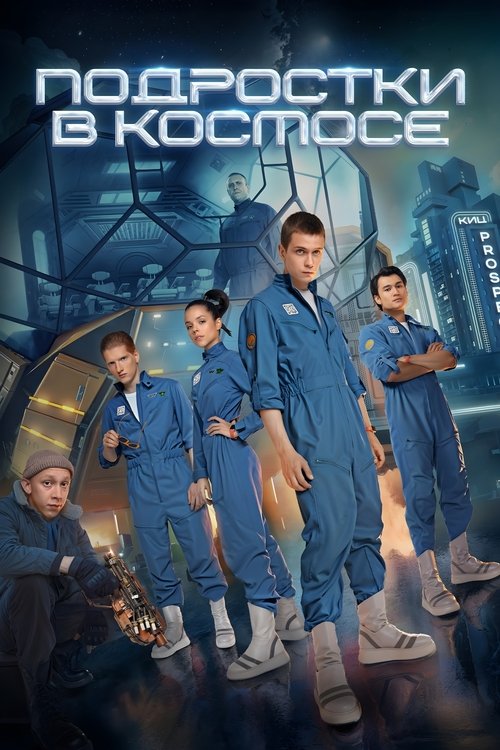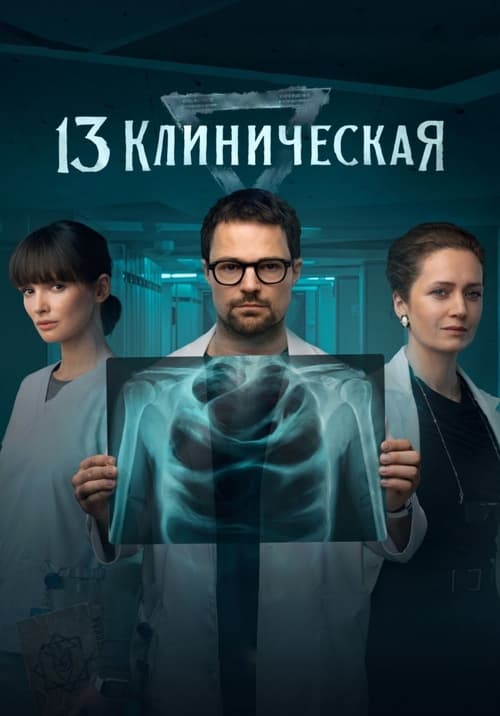
Ask Your Own Question
What is the plot?
In the year 2020, a group of passengers boards a spaceship named the Avalon, which is on a 120-year journey to a distant colony planet called Homestead II. The ship is equipped with advanced technology, including hibernation pods that allow passengers to sleep through the majority of the journey. As the ship travels through space, a malfunction occurs, causing one of the hibernation pods to wake its occupant, Jim Preston, 90 years too early. Jim, played by Chris Pratt, finds himself alone on the ship, surrounded by sleeping passengers.
Initially, Jim explores the ship, trying to understand his situation. He discovers the ship's amenities, including a bar, a gym, and a movie theater, but the isolation begins to weigh heavily on him. He struggles with loneliness and despair, grappling with the reality that he will never reach his destination and will die alone on the ship. After a year of solitude, Jim stumbles upon another hibernation pod and, after much internal conflict, decides to wake up another passenger, Aurora Lane, played by Jennifer Lawrence. He is drawn to her beauty and hopes that her presence will alleviate his loneliness.
When Aurora wakes up, she is initially confused and angry, demanding to know why Jim woke her. Jim lies to her, claiming that her pod malfunctioned. As they spend time together, a romantic relationship develops, and they bond over their shared predicament. However, Aurora begins to suspect that Jim is hiding something from her. As they grow closer, Jim struggles with guilt over his decision to wake her, knowing he has robbed her of her future.
As the story progresses, the ship experiences further malfunctions, including a failure in the ship's life support systems. Jim and Aurora work together to troubleshoot the issues, but their relationship becomes strained as Aurora learns the truth about Jim's decision to wake her. She feels betrayed and confronts him, leading to a heated argument. Jim tries to explain his motivations, but Aurora is hurt and feels trapped in a life she never chose.
In a pivotal moment, Aurora decides to take matters into her own hands and attempts to fix the ship's systems herself. She discovers that the ship's core is failing and that they are in grave danger. Jim, realizing the severity of the situation, joins her in the effort to save the ship. They work together to repair the damage, but the stress of their relationship and the impending crisis creates tension between them.
As they race against time, they face a series of challenges, including a malfunctioning gravity system and a fire that breaks out in one of the ship's compartments. Jim and Aurora must navigate through the chaos, using their skills and ingenuity to survive. During this time, they confront their feelings for each other, ultimately finding a way to forgive one another and work as a team.
In the climax of the story, they manage to stabilize the ship's systems, but not without significant risk. Jim sacrifices himself to save Aurora during a critical moment, putting himself in danger to ensure her safety. This act of bravery solidifies their bond, and Aurora realizes the depth of Jim's love for her.
After the crisis is averted, Jim is gravely injured, and Aurora must make a choice about their future. She decides to stay with him, caring for him as he recovers. They come to terms with their situation, accepting their unconventional life together on the ship. The story concludes with them finding a sense of peace and purpose in their relationship, despite the challenges they face in their isolated existence. They embrace their new reality, choosing to make the most of their time together as they continue their journey to Homestead II.
What is the ending?
In the ending of the TV show "Passengers," the main characters face the consequences of their choices as they navigate the complexities of their relationships and the challenges of their journey. The story culminates in a moment of realization and acceptance, leading to a resolution that impacts each character's fate.
As the final scenes unfold, the tension between the characters reaches a peak. The protagonist, who has been grappling with feelings of isolation and regret, confronts the reality of their situation. The emotional weight of their decisions becomes palpable, and they must come to terms with the consequences of their actions. The climax reveals the depth of their connections and the sacrifices they are willing to make for one another.
In the closing moments, the characters find a sense of closure. They reflect on their experiences, acknowledging the growth they have undergone throughout their journey. The ending leaves them with a renewed sense of purpose and hope for the future, despite the challenges they have faced.
Now, let's delve into the expanded narrative of the ending, scene by scene.
The final act begins with a tense atmosphere aboard the spacecraft. The main character, Alex, is grappling with the weight of their choices. The ship's systems are failing, and the crew's earlier decisions have led to dire consequences. Alex stands in the control room, staring at the flickering screens that display the ship's critical status. The hum of machinery is punctuated by the occasional alarm, heightening the sense of urgency.
In a pivotal scene, Alex gathers the remaining passengers in the common area. The mood is somber as they discuss their dwindling options. Each character expresses their fears and regrets, revealing the emotional scars that have formed during their journey. Sarah, a fellow passenger, speaks up, her voice trembling as she shares her own struggles with loneliness and the desire for connection. The camera captures the raw emotion on her face, highlighting the vulnerability of the moment.
As the group debates their next steps, tensions rise. Some passengers advocate for taking drastic measures to save the ship, while others argue for a more cautious approach. Alex, feeling the weight of leadership, tries to mediate the discussion, but the fear and desperation in the room are palpable. The scene is filled with close-ups of anxious faces, each reflecting a mix of hope and despair.
In a moment of clarity, Alex realizes that they must work together to overcome the challenges ahead. They propose a plan that involves splitting into teams to address the ship's critical systems. The passengers, though hesitant, begin to rally around the idea, showcasing a newfound sense of unity. The camera pans across the group, capturing the determination in their eyes as they prepare to take action.
As the teams disperse, the narrative shifts to the engineering bay, where Alex and Sarah work side by side. The tension between them is evident, but there is also a growing bond forged through shared adversity. They exchange glances filled with unspoken understanding, and the atmosphere shifts from one of fear to one of collaboration. The sound of tools clanking and the whir of machinery create a backdrop of urgency as they race against time.
In a climactic moment, the ship's systems begin to fail completely. Alarms blare, and the lights flicker ominously. Alex and Sarah manage to stabilize one of the critical systems, but not without a cost. The strain of their efforts takes a toll, and they share a moment of vulnerability, acknowledging the sacrifices they have made for one another. Their connection deepens, and the emotional stakes are heightened as they realize the importance of their bond in the face of impending doom.
As the final countdown begins, the passengers gather once more in the common area. The atmosphere is charged with a mix of fear and hope. Alex delivers a heartfelt speech, urging everyone to remember the strength they have found in each other. The camera captures the faces of the passengers, each reflecting a sense of determination and resilience.
In the closing moments, the ship stabilizes, and the immediate crisis is averted. The passengers breathe a collective sigh of relief, but the journey is far from over. Alex and Sarah share a quiet moment, their hands brushing against each other, symbolizing the connection they have forged. The camera lingers on their faces, filled with a mix of hope and uncertainty about what lies ahead.
As the credits roll, the fate of each character is left somewhat open-ended, allowing the audience to reflect on their journeys. Alex and Sarah stand together, looking out at the stars, embodying the themes of connection, sacrifice, and the enduring human spirit. The ending leaves viewers with a sense of possibility, hinting at the adventures that await them beyond the confines of the ship.
Is there a post-credit scene?
In the 2020 TV show "Passengers," there is no post-credit scene. The series concludes its narrative without any additional scenes after the credits roll. The final moments of the show wrap up the character arcs and storylines, providing a sense of closure to the viewers. The focus remains on the emotional resolutions and the journeys of the main characters, leaving no lingering threads that would typically warrant a post-credit scene.
What motivates the main character, who is the lead passenger, to take the journey on the spaceship?
The main character, who is portrayed as a restless and ambitious individual, is motivated by a desire for a fresh start and the hope of finding a new life on a distant planet. This journey represents not just a physical escape from their past but also an emotional one, as they seek to leave behind their previous failures and embrace the unknown.
How does the relationship between the lead passenger and the ship's AI evolve throughout the series?
Initially, the lead passenger views the ship's AI as a mere tool for navigation and assistance. However, as the journey progresses and challenges arise, the relationship deepens into a complex bond. The AI begins to exhibit more human-like traits, leading to moments of emotional connection, conflict, and ultimately, a partnership that reflects the lead passenger's internal struggles and growth.
What challenges do the passengers face during their journey, and how do they respond to them?
The passengers encounter a series of unexpected challenges, including system malfunctions, resource shortages, and interpersonal conflicts. Each challenge tests their resilience and adaptability. The lead passenger often takes on a leadership role, rallying the others to work together, while also grappling with their own fears and insecurities, which adds layers to their character development.
What is the significance of the recurring flashbacks experienced by the lead passenger?
The flashbacks serve as a narrative device to reveal the lead passenger's backstory, showcasing pivotal moments that shaped their motivations and fears. These glimpses into the past provide context for their actions in the present, highlighting themes of regret, longing, and the desire for redemption, ultimately enriching the viewer's understanding of their character.
How do the dynamics among the passengers shift as the story progresses?
As the story unfolds, the dynamics among the passengers shift from initial camaraderie to tension and conflict, driven by the stress of their situation. Personalities clash, alliances form and dissolve, and the lead passenger often finds themselves mediating disputes. This evolution reflects the psychological strain of their journey and the varying ways individuals cope with fear and uncertainty.
Is this family friendly?
"Passengers," produced in 2020, is a drama series that explores complex themes and emotional narratives. While it may appeal to a wide audience, there are several aspects that could be considered objectionable or upsetting for children or sensitive viewers.
-
Emotional Turmoil: The characters experience significant emotional struggles, including grief, loss, and existential crises. These themes may be heavy for younger viewers to process.
-
Conflict and Tension: There are scenes of interpersonal conflict that can be intense, showcasing arguments and confrontations that may be distressing.
-
Depictions of Isolation: The show explores feelings of loneliness and isolation, which could resonate negatively with sensitive individuals or children who may relate to these feelings.
-
Mature Themes: The narrative delves into adult relationships and the complexities of love and betrayal, which may not be suitable for younger audiences.
-
Visuals of Distress: Some scenes may include visual representations of distress or emotional breakdowns that could be upsetting.
Overall, while "Passengers" offers a rich narrative, its emotional depth and mature themes may not be appropriate for all viewers, particularly children or those sensitive to such content.

































